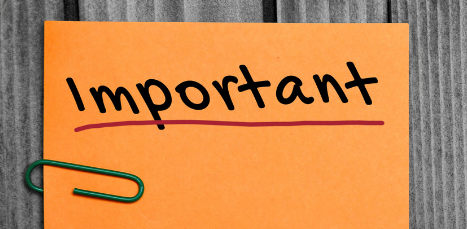3 Strategies To Better Manage Your Time
By Deanna deBara ![]() | Published February 22, 2022
| Published February 22, 2022
We all have the same 24 hours in a day. While some people seem to effortlessly manage those 24 hours, checking every item off their to-do list and having plenty of time left over for rest, relaxation, and fun, others struggle, ending every day with the same thought: “where did the time go?”
Suppose you’re one of the people who struggle. In that case, you’re not alone—but if you want to get more done during the day (and feel better while doing it!), you need to figure out a better, more effective way to manage your time.
But how, exactly, do you do that? Let’s take a look at three strategies you can use to improve your time management skills—and skyrocket your productivity in the process:
1. Take a time inventory…
You can’t more effectively manage your time if you don’t know where your time is going. This is why the first step to improving your time management skills is taking a time inventory.
A time inventory is a critical time management tool. It allows you to see precisely how you’re spending your time—and, more importantly, helps you identify areas where you may not be managing your time as effectively as you could be.
So, how does a time inventory work? It starts with clocking how you’re spending your time for an entire week. You can use a time tracking tool (like Time Doctor or Toggl)—or, if you prefer to keep it simple, you can just keep a log of your daily activities in a spreadsheet or Word document.
When you’re clocking your time, you want to be as specific as possible. So, for example, let’s say you’re spending the morning at your desk, tackling work. In that scenario, you wouldn’t just mark those hours as “work”; you want to get as specific and granular as possible, like this:
- 9 am to 9:12 am: Responding to emails
- 9:12 am to 9:22 am: Checking social media (business)
- 9:22 am to 9:31 am: Checking social media (personal)
- 9:31 am to 9:47 am: Brainstorming ideas for new software project
- 9:47 am to 10:45 am: Coding for Friday’s project deadline
- 10:45 am to 11 am: Snack break
- 11 am to 11:45 am: Conference call with team
- 11:45 am to 12 pm: Responding to emails
Once you have a week’s worth of data, you’ll have a clear picture of how you’re spending your time—and you can take those insights to manage your time more effectively (more on that in a moment).
2. …and use the Eisenhower Box to get unnecessary tasks off your to-do list
After you’ve done your time inventory, you’ll have a clear outline of all the items, tasks, and to-do’s that are taking up your time each day. And while some of those tasks are critical to your success, both at work and in your personal life, chances are, others are monopolizing your time without much of a return on investment. In fact, on average, only 60 percent (or less!) of work time is spent productively—which means that a whopping 40 percent of your time at work is spent on unnecessary, unproductive tasks.
Clearly, if you want to manage your time better, you need to identify those unproductive tasks—and get rid of them.

And the Eisenhower Box is a great way to do it.
The Eisenhower Box is a productivity tool used to evaluate different tasks; it groups tasks into four groups: Urgent and Important, Not Urgent and Important, Urgent and Not Important, and Not Urgent and Not Important.
Use your time inventory to make a list of every task you’re managing during the day, both in your work and personal life. Then, ask yourself, “Is this task urgent?” and “is this task important?”—and use your answers to group the task into the appropriate category.
Once you have all your daily to-do’s sorted into the appropriate groups, you can use the Eisenhower Box to determine how to manage the task—and identify opportunities to take time back in your day. Depending on where each task falls in the Eisenhower Box, you’ll want to take the following actions:
- Urgent and Important. These tasks are the highest priority; you should allot whatever time you need to complete these tasks and allocate that time ASAP.
- Not Urgent and Important. These tasks need to get done, but not right this second. You’ll want to carve out time for these tasks—but you can schedule that time for a later date.
- Urgent and Not Important. These tasks are time-sensitive, but because they’re less critical, you can delegate them to someone else—which frees up more time in your schedule.
- Not Urgent and Not Important. If a task isn’t urgent or essential, it’s not worth your time; get rid of it.
Bottom line? Suppose your time inventory helps you identify the tasks taking up your time. In that case, the Eisenhower Box will help you streamline your day by eliminating tasks that are wasting your time—and freeing up time to focus on the tasks that matter.
3. Set realistic time management goals
When it comes to managing your time, there’s no one-size-fits-all solution. Effective time management for one person could be entirely ineffective for another—and vice versa.
So, if you want to manage your time effectively, you need to set realistic time management goals for you.
For example, let’s say you’re a person that struggles to stay focused for long periods of time. While tackling project work in four-hour blocks of distraction-free time might be an effective time management strategy for other people, chances are, it’s not going to work well for you. At some point over those four hours, you’re likely going to lose focus and give in to a distraction. And then, when you try to return to your work, you’ll probably feel bad for not sticking to your original schedule—which will make it even harder to focus and get things done.
The more effective strategy would be to set a time management goal that makes sense for you—like tackling project work using the Pomodoro Method, which breaks focused work down into short, manageable bursts (with plenty of breaks in between).
The point is - effective time management is about figuring out the strategies that empower your individual productivity. So when looking at ways to manage your time, make sure that they’re not just good time management strategies—but time management strategies that are actually going to work for you.
Use time management to increase productivity.
Better time management is a critical element of improving productivity. And with these three strategies, you have everything you need to start better managing your time—and become a more productive person in the process.
Tags
Time inventory productivity tasks tips
Categories
Productivity Tips

Deanna deBara
Deanna deBara is an entrepreneur, speaker, and freelance writer who specializes in business and productivity topics. When she's not busy writing, she enjoys hiking and exploring the Pacific Northwest with her husband and dog. See more of her work and learn more about her services at deannadebara.com.
